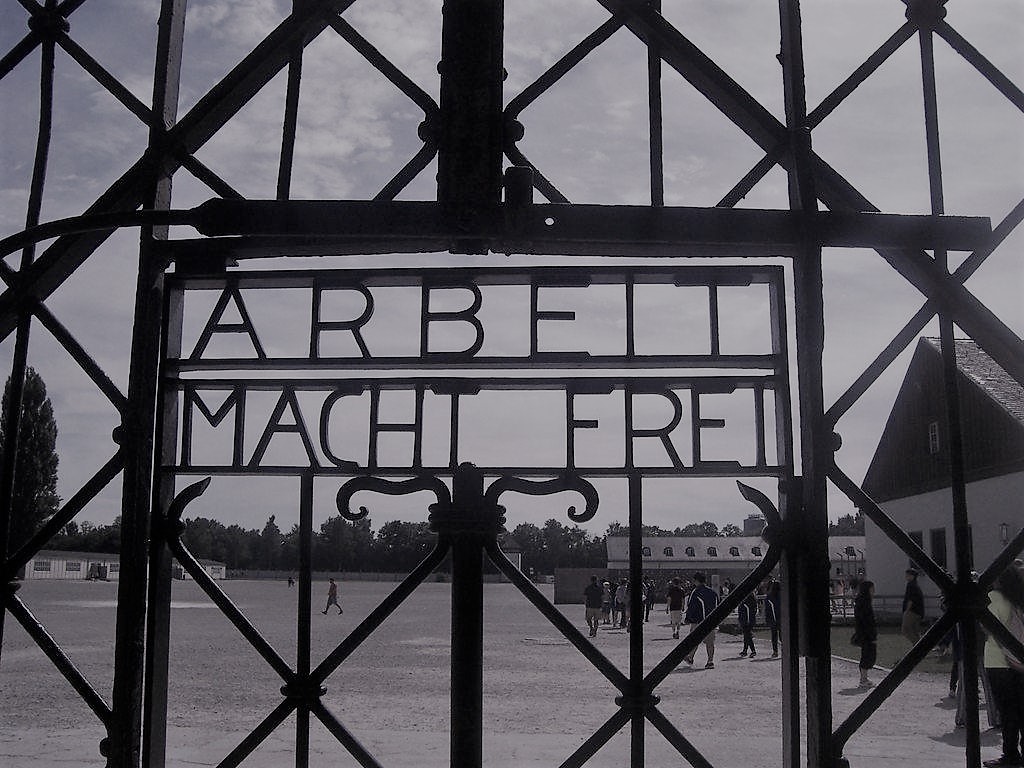On April 11, 1945, at 3:15 p.m., U.S. Army units entered the territory of the Nazi concentration camp Buchenwald, located near the city of Weimar in Thuringia (Germany). The U.S. military has just completed the liberation of the camp, as its prisoners rebelled against the Nazi administration this morning. Later, April 11 was recognized as the International Day of the liberation of Nazi concentration camps.
The Nazis were not the inventors of the technology of organizing concentration camps. However, it was they who, almost immediately after coming to power in 1933, used it in the struggle against political opponents, dissidents, and later those who, according to their racial theory, were subject to total annihilation - Jews and Roma.
Decorating the gates of the camps that closed the branches of hell on earth with pathetic slogans, the Nazis, as adherents of totalitarianism, actually sought one thing - to destroy the individual's right to otherness and self-worth. Quirky mechanisms of punishment, improvement of technologies of slow death due to hunger, illness, exhausting work, seasoned with constant use of violence and subtle torture - only the consequences of the policy of subjugation by fear.
During World War II, the concentration camps will overthrow the remnants of illusions about themselves as "places of correction of the individual" and become "death factories," subject to the goal of destroying hundreds of thousands and even millions of "enemies of the Reich". Auschwitz-Birkenau, Belzec, Kulmhof, Maidanek, Sobibor, Treblinka are the infamous symbols of the Catastrophe of European Jewry, a genocide that killed more than 6 million people.
Like any empire, the evil Nazi system of concentration camps was destroyed: by the human spirit and victory of the prisoners themselves, by the armed forces of the Allied armies. However, the criminal technology of forcible concentration of people whom the totalitarian regime considered dangerous to its existence has not disappeared. The territory of former Nazi camps, such as Buchenwald or Maidanek near Lublin, Poland, seemed acceptable to the Soviet authorities for the organization of cells of the already communist system of control and terror in Central and Eastern Europe. Despite the controversial comparison of communist and Nazi technologies of subjugation and destruction (since any comparison is relative and imperfect), both totalitarianisms were united by an absolute lack of sentiment in the choice of ways and means of fighting Freedom and Personality.
P.s. You can find hundreds of variations on the theme of cyclicality and ingenuity of history, which punishes for poorly learned lessons of the past. Professional researchers are usually ironic about this kind of simplification. However, could anyone imagine that in Ukraine at the beginning of the XXI century. Will a prison be set up in one of its largest cities, the regime of which will be remarkably reminiscent of the ingenuity of the executioners of Nazi concentration camps or those of the Soviet Gulag Empire?
A new arrival to the library of Museum "Jewish Memory and Holocaust in Ukraine", a book by Ukrainian journalist and writer Stanislav Aseyev entitled "The Bright Way: The History of a Concentration Camp", symbolically emphasizes the memory of victims of totalitarian terror and the infinity of human evil.
The author experienced a horrible 28-month experience of imprisonment in the so-called "Isolation" - a concentration camp created by the so-called terrorist regime DNR on the territory of occupied Donetsk. "Isolation" emerged in the center of the industrial metropolis in 2010 as a modern art space, the site of hundreds of successful artistic and cultural projects, and was transformed by the occupiers in 2014 into a zone of imprisonment and torture. Paradoxically, the history of this place on the Svitlogo Shlyakhu [Light Pass] street, 3, as a prison and camp, is longer than his artistic period.
"The door closes again, and there is excitement and euphoria in the cell. And only a new prisoner, who arrived here a week ago, asks in surprise:
- And where are they all so happy to run?
"To prison," we reply, just as surprised.
Is this imaginable? Yes, the day of moving from here [1] was considered by most to be the day of liberation, and this depicts a stay in "Isolation" better than screams and electricity. Sometimes it seemed to us that it was an experiment. The unreality of everything that happened there, and even a dozen video cameras in addition prompted such strange thoughts […]
Everything with a clear fixation: in each cell, in the dungeons, in each basement, video cameras, terabytes of video recordings, hundreds of hours of evidence for international courts are installed. This is all the more akin to an experiment: for six years, people cannot continue to film their own crimes with impunity, with irony for every UN report. Can they still? In this case, "Isolation" shows what the world is. All ignorance, all cruelty and injustice were concentrated right here, on Svitlogo Shlyakhu [Light Pass] street, 3 ”[2].
Also, to your attention, a video dedicated to this memorial day. The guest of the "Vidrkrutij" press center was Dr. Yehor Vradii, Deputy Director of "Tkuma" Institute and Museum "Jewish Memory and Holocaust in Ukraine".
[1] This is not about release, but about the transfer of Isolation prisoners to other places of detention where the occupiers are illegally holding civilians, as well as Ukrainian prisoners of war.
[2]. Aseyev S. "The Bright Way: The History of a Concentration Camp: short prose / trans. from the Russian. Victoria Stach. Lviv: Staryi Lev Publishing House, 2020. P. 12–13.

